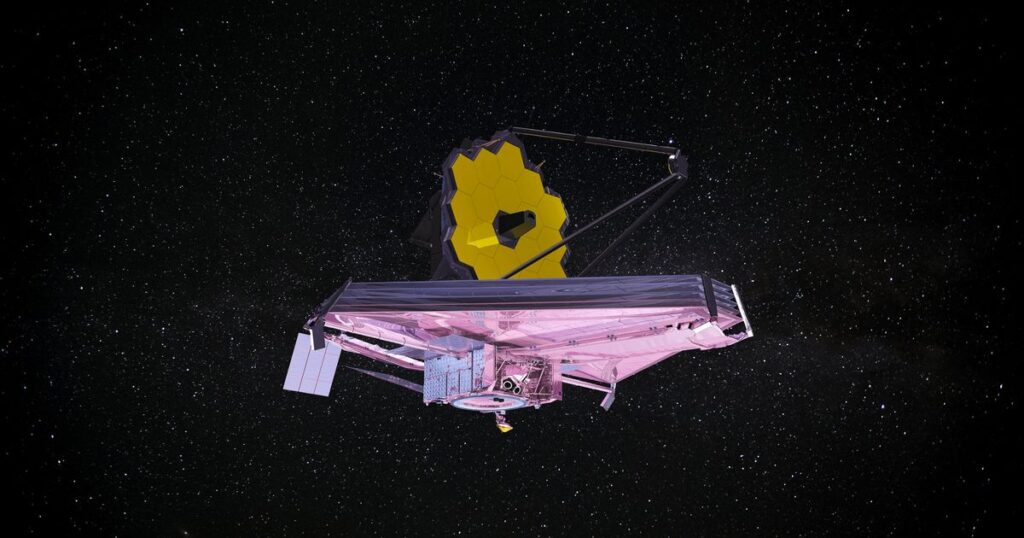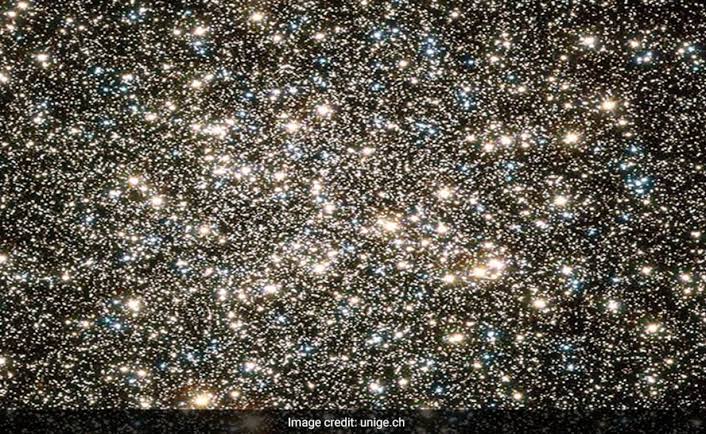Introduction
JWST and the Ancient Stars – In a groundbreaking discovery. The James Webb Space Telescope (JWST) has unveiled the existence of massive stars. That formed a mere 440 million years after the Big Bang. This revelation opens a window into the early universe. Shedding light on the formation of celestial bodies and the origins of our cosmos.
The Significance of JWST
JWST, NASA’s most ambitious space observatory. Is equipped with cutting-edge technology that allows astronomers to peer deeper into space and farther back in time than ever before. Its ability to capture infrared radiation enables it to penetrate cosmic dust clouds, revealing hidden astronomical phenomena.
Unveiling Early Universe – JWST and the Ancient Stars
The detection of stars that emerged shortly after the Big Bang provides crucial insights into the rapid evolution of the universe. By studying these ancient celestial bodies. Scientists can gain a better understanding of the conditions that prevailed during the universe’s infancy.
The Formation of Massive Stars

Massive stars, several times larger than our sun, play a pivotal role in the cosmic cycle. They influence the formation of galaxies, enrich interstellar space with heavy elements, and even contribute to the birth of new stars through their explosive supernovae.
Understanding the Big Bang – JWST and the Ancient Stars
The Big Bang, a cosmic event approximately 13.8 billion years ago, marked the beginning of our universe. During this momentous explosion, all matter, energy, space, and time originated from an infinitely small, hot, and dense point.
JWST’s Advanced Technology – JWST and the Ancient Stars
JWST’s advanced instruments, including its Near Infrared Spectrograph (NIRSpec) and Mid Infrared Instrument (MIRI), allow scientists to analyze the chemical composition of distant galaxies, study exoplanets’ atmospheres, and explore the cosmic origins of complex molecules.
Groundbreaking Discoveries – JWST and the Ancient Stars
The discovery of early massive stars is just one of the many groundbreaking findings made possible by JWST. From detecting exoplanets in habitable zones to unveiling the mysteries of dark matter, this telescope has revolutionized our understanding of the universe.
Impact on Astrophysics – JWST and the Ancient Stars
JWST’s findings reshape the landscape of astrophysics, challenging existing theories and prompting scientists to reevaluate their understanding of the cosmos. Its observations provide a wealth of data that scientists worldwide eagerly analyze, advancing our knowledge of the universe’s intricacies.
Unraveling Cosmic Mysteries – JWST and the Ancient Stars
As JWST continues its mission, astronomers anticipate unraveling more cosmic mysteries. Questions about the origins of life, the existence of extraterrestrial civilizations, and the nature of dark energy are among the many puzzles scientists aim to solve using this revolutionary telescope.
Future Prospects
Looking ahead, JWST promises even more remarkable discoveries. Its future missions include exploring the atmospheres of exoplanets, studying the formation of planetary systems, and investigating the conditions necessary for life to arise in the universe.
FAQ 1: How does JWST work?
JWST operates primarily in the infrared range, allowing it to detect celestial objects obscured by dust clouds. Its large mirror and advanced detectors collect faint infrared radiation, which is then analyzed to provide detailed information about distant galaxies, stars, and planets.
FAQ 2: What are massive stars?
Massive stars are stars with significantly larger masses than our sun. They have a profound impact on the universe, influencing the evolution of galaxies and contributing to the formation of elements essential for life. Due to their immense gravitational pull, they often end their lives in spectacular supernova explosions.
FAQ 3: Why is the Big Bang significant?
The Big Bang is significant as it marks the origin of the universe. It explains the expansion of space, the formation of galaxies and stars, and the development of the fundamental forces and particles that govern the cosmos. Understanding the Big Bang is essential for comprehending the fundamental nature of our existence.
FAQ 4: How does JWST impact astronomy?
JWST’s impact on astronomy is profound. By capturing detailed images and spectra of distant celestial objects, it expands our understanding of the universe’s history, structure, and composition. It enables scientists to study exoplanets, early galaxies, and the formation of stars, paving the way for groundbreaking discoveries.
FAQ 5: What are the upcoming JWST missions?
JWST’s future missions include studying the atmospheres of exoplanets, exploring the formation of planetary systems, investigating the properties of distant galaxies, and unraveling the mysteries of dark matter and dark energy. These missions promise to revolutionize our understanding of the universe and its many enigmas.

